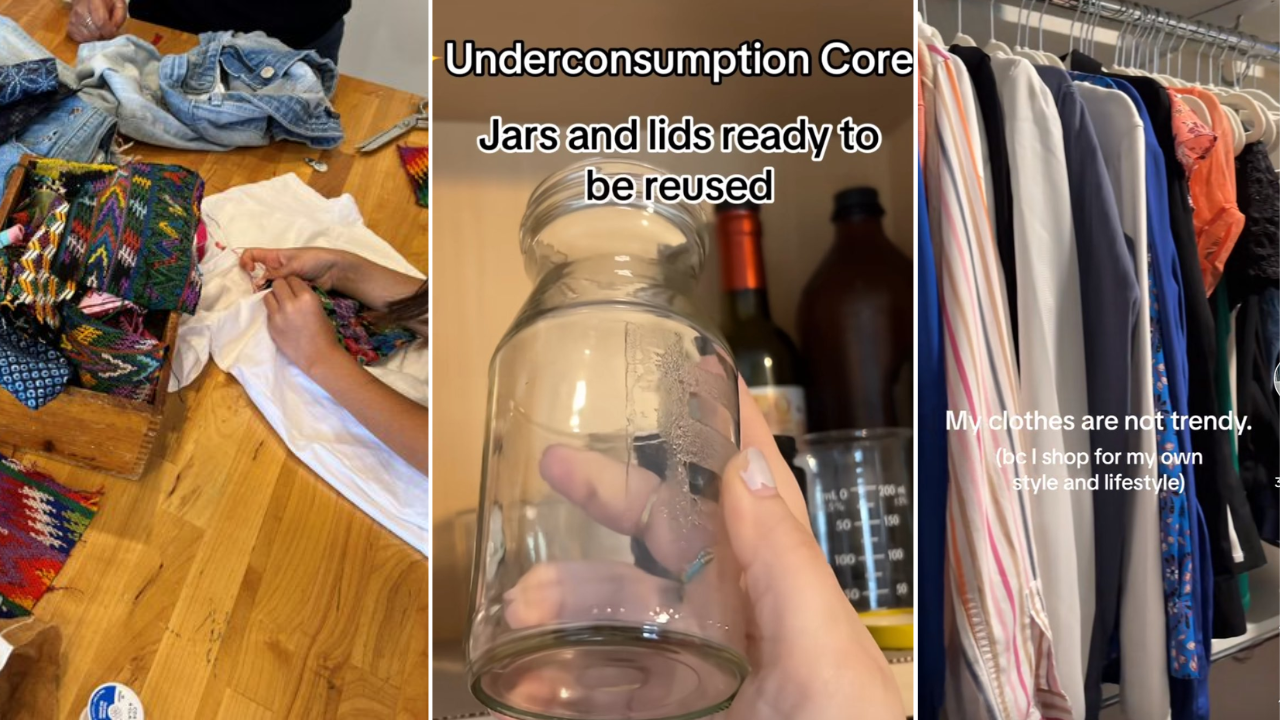This movement advocates for sustainable living, repurposing items, and focusing on quality over quantity, diverging sharply from the consumerism often showcased online.
Kara Perez, a financial influencer, highlighted the growing dissatisfaction with constant consumer pressures. “When every moment of your life feels like you’re being sold something and the price of said item keeps going up, people will burn out on spending money,” she was quoted by AFP as saying. This trend is gaining traction as individuals seek alternatives to the excess and materialism frequently promoted on platforms like TikTok.
The “underconsumption core” trend emphasizes making do with what one already has and living more sustainably. This shift stands in stark contrast to the opulence often depicted by influencers on social media. Perez, who repurposes everyday items like jars for practical use, is part of this growing movement.
TikTok user loveofearthco’s video, which critiques the culture of overconsumption, has amassed over 100,000 views. The video reflects a growing awareness of the pitfalls of excessive spending: “I spent money I didn’t have on things I didn’t need.”
The US economy, while showing record corporate profits, has not alleviated the financial strain felt by many, especially younger generations. Culture analyst Tariro Makoni noted that this economic disparity can feel misleading. “It feels almost ‘gaslighty’ to consumers,” she said, suggesting that BNPL plans might exacerbate overconsumption and skew perceptions of financial stability.
A recent surge in searches for “underconsumption” and related terms reflects a shift in priorities. The trend aligns with broader economic concerns, as many young adults face challenges in keeping up with social media-driven consumption patterns.
Andrea Cheong, a UK-based influencer, observed that social media pressure can drive compulsive spending. Her recent video on mending old clothes exemplifies the “underconsumption core” approach, emphasizing sustainability and authenticity over fleeting trends.
Ashley Ross of Bank of America noted that the “underconsumption” trend offers a practical way for Gen Z to manage their finances and adopt environmentally friendly practices. A 2024 survey found that high living costs are a major barrier for over half of Gen Z adults, underscoring the relevance of this movement.
As the trend gains momentum, it reflects a broader cultural shift towards sustainability and mindful consumption. Anjali Zielinski’s participation in a “Mending 101” workshop with her daughter highlights how this approach resonates across generations. By teaching the value of preserving and repurposing items, Zielinski embodies the principles of “underconsumption core,” demonstrating that sustainable choices can span age groups and lifestyles.
Source : Times of India






